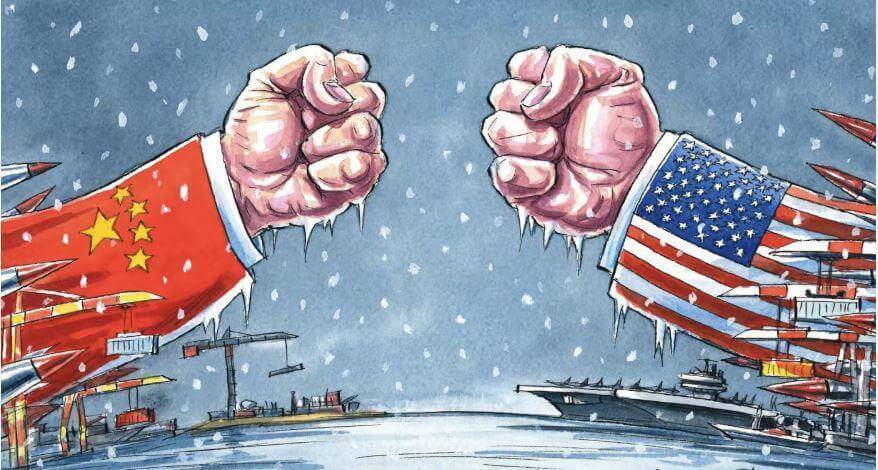
Key Points
- Market Neutral Strategies May Offer Protection During Trade Wars
By balancing long and short positions, market neutral strategies aim to generate returns independent of overall market direction. This approach can help shield portfolios from the volatility and disruptions caused by tariffs and global trade tensions. - Diversified, Multi-Dimensional Neutrality Generally Reduces Risk Exposure
Effective market neutral portfolios manage risk by maintaining neutrality across multiple dimensions — including sector, country, currency, market beta, and company size. This structure is designed to prevent concentrated exposure to trade-related shocks and mitigates the risk that any single event or region disproportionately affects returns. - Returns Driven by Stock Selection, Not Market Timing
With broad market risks neutralized, stock selection relies on a steadfast approach using strategies like sentiment analysis, liquidity screening, monitoring industry momentum vs. stock-specific reversals, and using dynamic, real-time risk models. This is intended to enable portfolios to capitalize on inefficiencies without needing to predict geopolitical events.
As global trade tensions escalate and tariffs create significant market uncertainty, investors face increased volatility and potential portfolio declines. Tariffs disrupt established supply chains, increase costs for businesses and consumers, and often trigger retaliatory measures that further destabilize markets. These factors create an environment where traditional long-only investment approaches may struggle. At Bridgeway Capital Management, our market neutral Absolute Return strategies are designed to deliver uncorrelated returns that can thrive during such uncertain periods.
Our Absolute Return strategies employ both long and short positions designed to generate returns regardless of overall market direction. Unlike traditional approaches that only profit in rising markets, our strategies can capitalize on both overvalued stocks (through short positions) and undervalued opportunities (through long positions). This balanced approach allows us to potentially profit from the market dislocations that trade wars create while maintaining a protective posture against broader market declines. By neutralizing market exposure, we aim to provide investors with a valuable diversification tool during periods when conventional investments face heightened risk.
Portfolio Design: Keys to Managing Trade War Risks
In our market neutral portfolio, the dollar amounts invested in long and short positions are equal, in attempt to neutralize overall market exposure. This aggregate portfolio long vs short balance and other market neutral portfolio constraints allow our strategy to potentially profit from both rising and falling stock prices, resulting in a return stream uncorrelated to the broader market.
To build a market neutral portfolio resilient to trade war risks, Bridgeway employs a highly diversified approach. Our Long portfolios typically hold over 250 stocks, while our Short portfolios often exceed 300 names, selected from a universe of more than 10,000 stocks across 35+ countries and all 11 market sectors. With a vast investment universe to choose from, the strategy can be highly selective in its positions, avoiding over-concentration in any one company, sector, country, or currency that might be particularly vulnerable to trade tensions.
This breadth is combined with carefully engineered neutrality constraints across multiple systemic risk dimensions such as:
- Sector Neutrality: Sector Neutrality is a portfolio construction constraint aimed at equalizing long and short allocations within each market sector to reduce the impact of trade actions targeted at specific industries. Most of our sector exposures are less than 3%.
- Country Neutrality: Country neutrality is a key principle for managing the risks associated with international investing, particularly in the context of a global trade war. By maintaining balanced long and short positions within each country, a market neutral portfolio can effectively neutralize its exposure to country-specific risks, such as changes in trade policies, geopolitical events, or economic conditions. This approach also implies cost-effective currency neutrality, as the strategy’s net exposure to each country’s currency is minimized. When a strategy has equal long and short positions in a given country, any gains or losses from currency fluctuations on the long side will be offset by corresponding losses or gains on the short side. By keeping the majority of country exposures under 3%, our well-diversified market neutral portfolio is designed to further reduce its vulnerability to any single country’s trade war-related risks, while still maintaining the flexibility to capitalize on attractive opportunities in specific markets.
- Beta Neutrality: Beta is a measure of a stock’s or portfolio’s sensitivity to broader market movements. A beta neutral portfolio aims to achieve a beta close to zero, meaning its performance is largely independent of market swings. This is particularly valuable during trade disputes, which can trigger heightened market volatility. By balancing the beta of long and short positions, a market neutral hedge strategy can insulate its performance from the shocks and swings that trade wars can bring, providing a degree of stability in uncertain times.
- Size Neutrality: Size neutrality is an important aspect of portfolio construction in a market neutral portfolio, particularly in the context of a global trade war. By maintaining a similar distribution of market capitalizations in both the long and short portfolios, the strategy can mitigate the risk of its performance being overly influenced by the divergent fortunes of large and small companies, often impacted differently by tariffs.
By diligently pursuing neutrality across these risk dimensions, the strategy is designed to sidestep many of the risks posed by the tensions and gyrations of trade wars.

Breadth and Neutrality in Action: Navigating Trade War Scenarios
Trade wars create asymmetric impacts across sectors, countries, and company sizes, generating volatility for directly affected entities. A well-constructed market neutral portfolio with comprehensive neutrality across multiple dimensions (sector, country, currency, beta, and size) may offer effective protection against these disruptions. Let’s examine how this approach functions across various trade conflict scenarios.
When China imposes agricultural tariffs on the U.S., or when the U.S. and Europe exchange food and beverage tariffs, our sector neutrality aims to ensure that declining long positions in affected industries are offset by gains in our short positions that are also declining in value in the same sectors. This principle applies equally when automotive tariffs escalate between trading partners or when supply chain disruptions affect technology companies dependent on restricted materials like rare earth minerals.
Country and currency neutrality prevent overexposure to nation-specific risks by balancing long and short positions within each country, naturally hedging against currency fluctuations triggered by trade disputes. Beta neutrality minimizes sensitivity to broader market moves that can result from trade tensions. While large multinationals—common in industries such as technology, consumer staples, pharmaceuticals, and automobiles—often have the flexibility and resources to navigate tariffs, their global reach can also increase exposure to international trade barriers. In contrast, more locally focused industries like utilities, real estate, regional banks, healthcare providers, and domestic retailers tend to be insulated from tariffs, as their operations and supply chains are primarily domestic. However, the impact of any given tariff ultimately depends on its nature and the industry affected. This is why combining size neutrality—which balances exposures between large and small companies—with sector neutrality—which mitigates net exposure across different sectors—offers a more robust defense. Together, these portfolio construction techniques help mitigate the risk that any single country, currency, company size, or sector disproportionately affects overall returns during periods of global trade disruption.
This multi-dimensional neutrality is designed to create resilience regardless of which sectors become trade war battlegrounds. Whether agricultural products, spirits, automobiles, technology components, or industrial materials like aluminum become targets, our balanced approach maintains portfolio stability. When U.S. farmers lose access to Chinese markets, European food exporters face retaliatory measures, automakers confront higher input costs, tech companies struggle with supply chain disruptions, or manufacturers absorb increased material costs, our neutrality across all five dimensions is intended to mitigate portfolio volatility.
The key advantage of this approach is adaptability without prediction. Rather than attempting to forecast which sectors or countries will be targeted next in unpredictable trade conflicts, our market neutral strategy creates systematic resilience through its comprehensive balancing mechanisms.
Stock Selection Considerations Amidst the Tensions
With all of these neutrality constraints in place, you might wonder how we generate returns. The answer lies in our disciplined and steadfast approach to stock selection. By using portfolio construction for risk mitigation with our neutrality constraints, we remove broad market risks and focus the portfolio’s active risk on our stock picks. Our market neutral portfolio typically maintains a gross exposure of 200% and targets an annualized volatility of 10%, ensuring that the potential for returns comes from identifying individual winners and losers, rather than betting on geo-political trends or passing investment themes. We believe that idiosyncratic returns—those sourced from the breadth of specific company insights—are more consistent and repeatable than trying to profit from predicting countries, sectors, or size effects. In essence, neutrality allows our stock selection skill to shine through as the main driver of performance.
It’s worthwhile to point to four specific aspects of our stock selection process that are particularly relevant in the current environment:
- Stock-Specific Liquidity: We believe nimble, forward-looking fundamental analysis becomes exceptionally valuable when navigating the rapidly shifting currents of trade disputes. Our liquid portfolio mandate is designed to create agility, requiring at least $250,000 of daily liquidity in every position to enable swift repositioning as conditions evolve.
- Sentiment Analysis: During periods of heightened uncertainty such as we are experiencing, our Sentiment models demonstrate that forecasts of company fundamentals consistently outperform historically reported financial statements for stock selection efficacy. We attempt to capitalize on unusual price movements supported by strong volume that quickly express market sentiment, performing daily analysis to decompose where market sentiment is already priced-in and—more crucially—where it remains unrecognized. This approach uncovers idiosyncratic opportunities by distinguishing between stock moves reflecting realistic earnings expectations versus those driven by emotional investor reactions, especially for knowledge-based, high intangible industries. (See Dugar and Pozharny, Financial Analyst Journal, 2021)
- Industry Momentum vs Stock Price Reversals: Our behavioral research on market microstructure reveals a critical pattern: industries affected by economic shocks (like tariffs) often experience strong directional momentum, while some stocks within these industries frequently demonstrate momentum reversal patterns. When trade actions target a specific industry, we observe initial broad-based reactions across all companies in that sector, regardless of their actual exposure to the tariff. This creates exploitable inefficiencies as the market eventually differentiates between genuinely vulnerable companies and those with minimal exposure or greater adaptability. By identifying industry-level momentum with carefully selected counter-momentum opportunities in specific stocks within the same industry, we can capitalize on both the initial tariff shock and the subsequent rationalization as markets reassess individual company impacts. (See Stein and Pozharny, Risks, 2022)
- Dynamic Risk Modeling: Rather than relying on conventional risk models built on long-term historical data, we deploy dynamic risk modeling calibrated to current market conditions and recent covariance patterns. Understanding recent global stock price covariances proves far more effective in capturing the systematic risks caused by trade war developments. These more dynamic recent covariance estimates adapt quickly to emerging correlation patterns as trade tensions reshape global market relationships. Commercial risk models estimated during periods of globalization fundamentally miss the mark when applied to today’s trade war environment. This adaptive methodology allows us to respond effectively as trade developments propagate through interconnected global markets with unprecedented speed and complexity.
Your Ally in Uncertain Times
In this period of elevated uncertainty, market neutral strategies warrant serious consideration for a portion of most portfolios. By engineering diversified, neutral exposure and dynamically shifting with evolving risks and opportunities, Bridgeway’s Absolute Return strategies aim to chart a steady course through the choppiest market conditions.
We invite you to contact Bridgeway to discuss how our market neutral strategies are currently positioned, where we see mispricing of market sentiment, and the role our insights can play in your portfolio. Together, we can strive to transform the challenges of a global trade war into opportunities for uncorrelated returns.
Additional Readings
- Dugar, A., & Pozharny, J. (2021). Equity investing in the age of intangibles. Financial Analyst Journal, March 2021.
- Stein, H, & Pozharny, J. (2022). Modeling Momentum and Reversals. Risks, September 2022.
DISCLOSURES
The opinions expressed here are exclusively those of Bridgeway Capital Management (“Bridgeway”). Information provided herein is educational in nature and for informational purposes only and should not be considered investment, legal, or tax advice.
Investing involves risk, including possible loss of principal. In addition, market turbulence and reduced liquidity in the markets may negatively affect many issuers, which could adversely affect investor accounts.
Diversification neither assures a profit nor guarantees against loss in a declining market.

